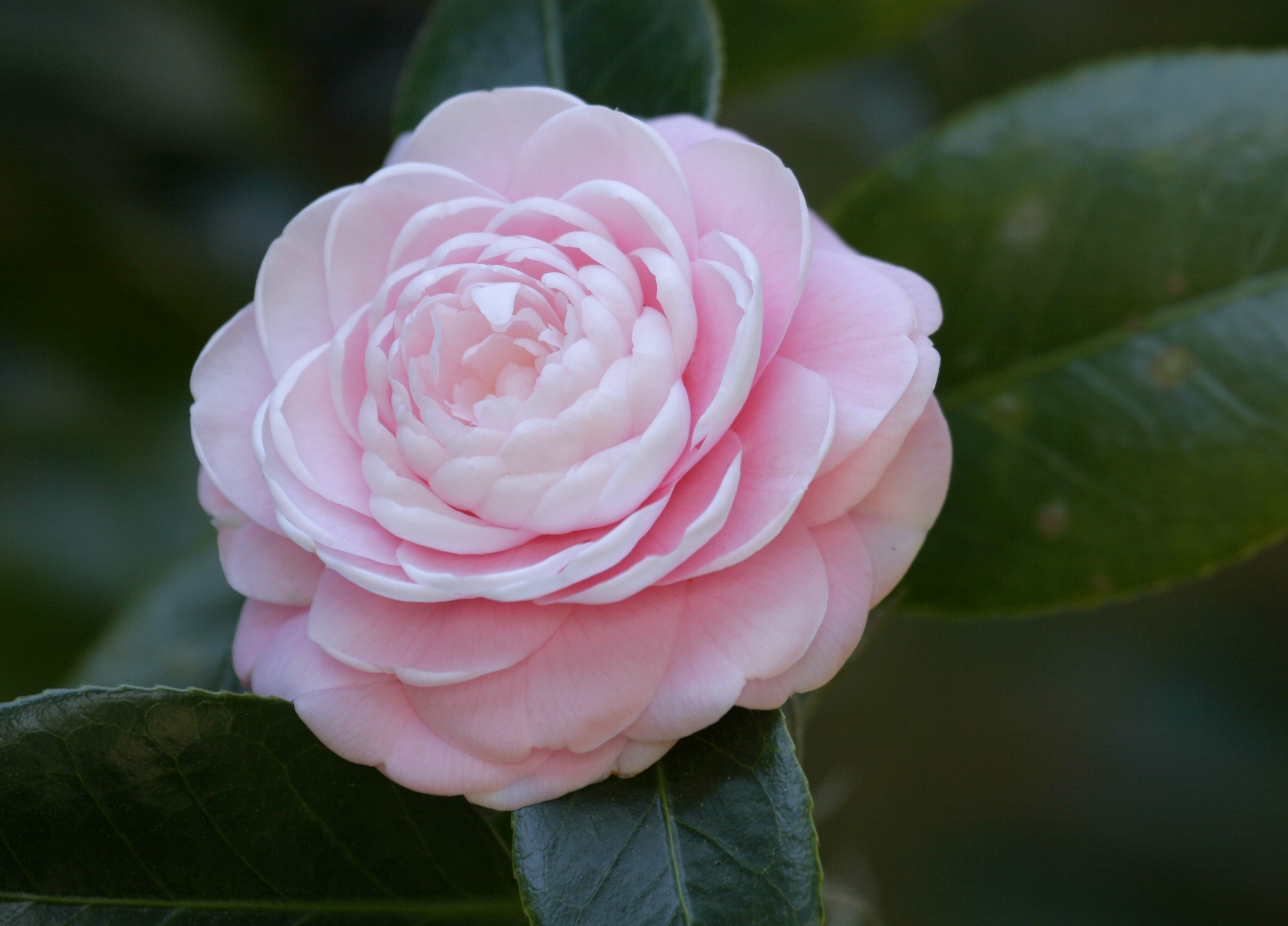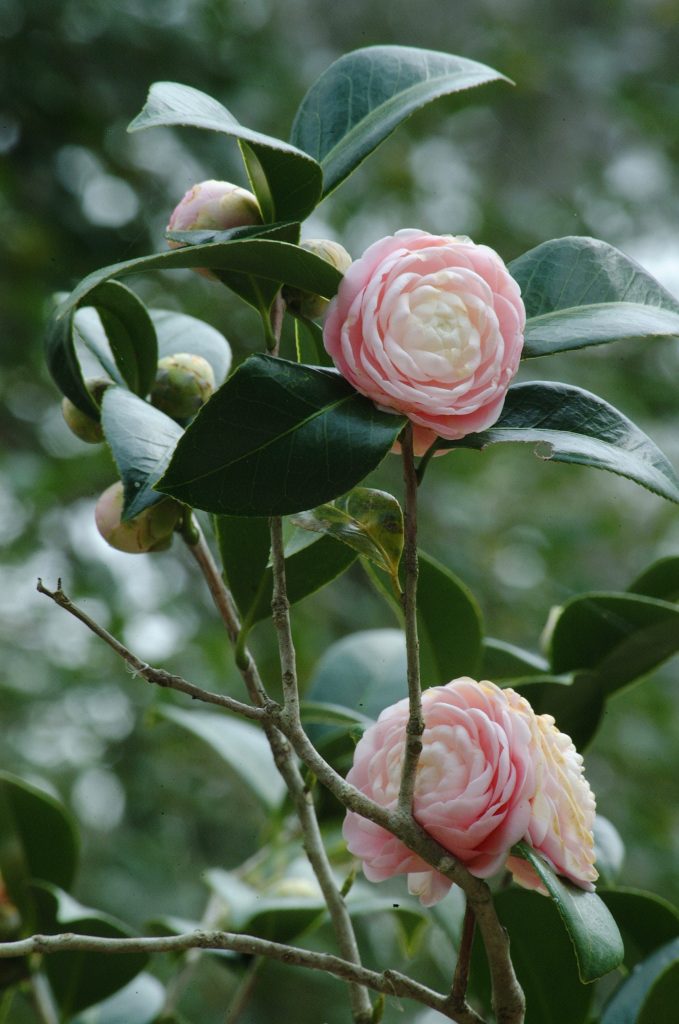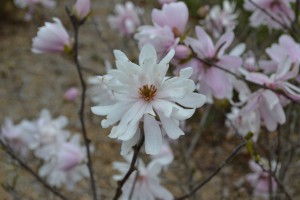
Camellia -The Rose of Winter
Article Written by Khadejah Scott, Horticulture & Ag/Natural Resources Agent, UF/IFAS Extension – Wakulla County
In the serene charm of winter, a beautiful flower comes to life, adding its beautiful blooms to gardens everywhere – the Camellia, often hailed as the “Rose of Winter.” Adorned with lush, glossy evergreen leaves and a tendency to bloom even when other plants are dormant, the Camellia showcases nature’s enduring strength and grace. Consider choosing and planting camellias this January to bring this touch of elegance to your own garden.

Description: Originally from Asia, camellia plants first arrived in America in 1797 and were grown in greenhouses in New England. For over two centuries, they have proven to be reliable and valuable additions to the southern landscape. Their leaves are simple, thick, serrated (notched like a saw), alternately oriented, and usually glossy. These plants produce large, multicolored flowers that can grow up to 5 inches. The common name “camellia” refers to hybrids of Camellia japonica and Camellia sasanqua. Sasanqua types bloom from October to December, followed by japonica types, which bloom from December to March.
Landscape Uses: Camellias stand out when few other plants bloom in the fall and winter. Camellia blooms look similar to roses, as well as anemones and peonies. The rest of the year, camellias make excellent landscaping plants due to their glossy, evergreen foliage, intriguing patterns and textures, and low maintenance requirements. Camellias can be used as foundation plantings, screens, accent plants, background groupings, and hedges in the landscape. Mass plantings or clusters can yield the most significant benefit.

Plant Selection: You can buy camellias from nurseries, plant sales, garden festivals, and camellia displays. Plant size and form vary significantly among varieties, ranging from small to big, spreading to upright. There is also a great variety of flower shapes, hues, and conditions, and new types are released yearly. A comprehensive list with descriptions and images is available from the American Camellia Society (https://www.americancamellias.com/care-culture-resources).
Care: To ensure the longevity of your camellias, choose a suitable location with bright, partial shade, protecting them from intense afternoon sun. Plant between November and February for optimal root establishment before summer. Use mulch to retain moisture and stabilize temperature fluctuations. Camellias thrive in well-drained, fertile soil with a pH between 5.0 and 6.5. While generally resistant to drought, consistent watering is necessary during prolonged dry periods. Apply acid-forming fertilizer twice a year, and prune lightly in early spring if needed.
Ultimately, camellias stand as enduring botanical treasures and timeless landscape companions. For more information about camellias, contact your local county extension office.


